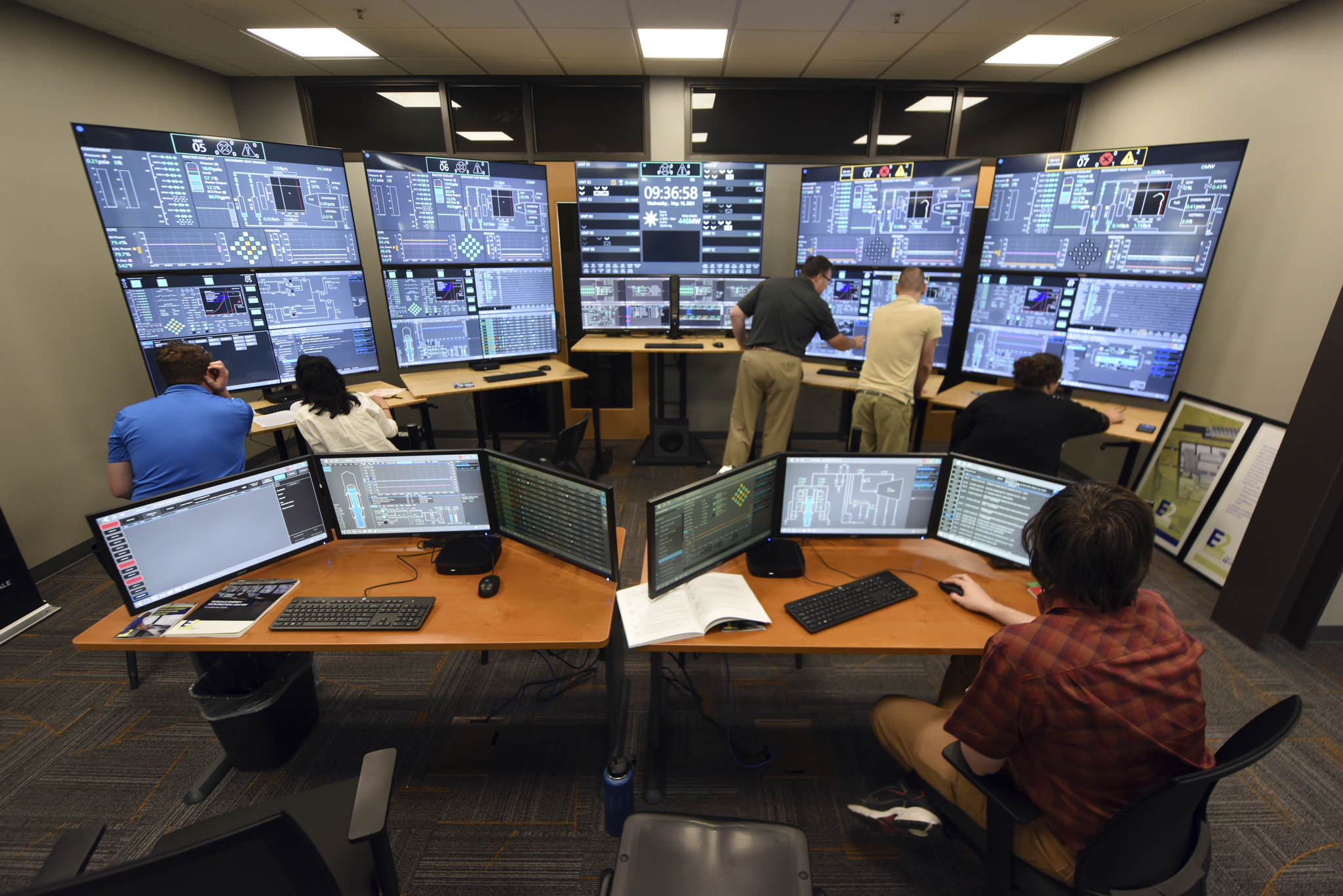CAES unveils new laboratory featuring nuclear power plant control room simulator
IDAHO FALLS, Idaho — The Center for Advanced Energy Studies (CAES) is pleased to announce the opening of its newest laboratory, the Small Modular Reactor (SMR) Simulator Laboratory, featuring NuScale Power’s Energy Exploration (E2) Center, at its Idaho Falls headquarters.
The new lab features a virtual nuclear power plant control room that allows users to assume the role of operator to learn about NuScale’s SMR technology. For CAES, the new lab:
- Enhances the ability to inspire, train and educate the future energy workforce.
- Demonstrates its commitment to educating the next generation of scientists and engineers.
- Supports its pledge to conduct cutting-edge energy research and partner with industry.
- Provides a valuable tool for educating the public about nuclear energy and reactor technology.
- Expands opportunities for collaborative research between CAES and NuScale.
NuScale’s SMR is the first to receive design approval from the U.S. Nuclear Regulatory Commission. The first module is expected to be fully commercially operational by the end of the decade. Tentative plans call for the first NuScale power plant to be constructed on Idaho National Laboratory’s 890-square-mile desert Site west of Idaho Falls, as part of the Utah Associated Municipal Power Systems Carbon Free Power Project.
CAES’s new laboratory is the result of a $286,000 award that CAES-affiliated University of Idaho professor Richard Christensen obtained in 2019 through the Department of Energy’s Nuclear Energy University Program. Christensen is the principal investigator of the project, which involves University of Idaho professors Robert Borrelli, Michael Haney, and Michael McKellar, and NuScale’s Derrick Botha. It is the second such simulator to be installed in the U.S. The first went online at Oregon State University in 2019. A third will be installed at Texas A&M University.
In addition to providing hands-on opportunities to apply nuclear science and engineering principles through simulated, real-world nuclear power plant scenarios, the new lab provides a platform for communicating the importance of carbon-free nuclear power for attaining a safe, clean, and secure energy future for the U.S. and the world.
The lab will enhance CAES’ community outreach efforts through demonstrations, tours, and education to community leaders, K-12 students and interested citizens. The new lab also will help the CAES entities (Idaho National Laboratory and Idaho’s public research universities) research and demonstrate safe, secure and resilient microgrid systems.
?????About NuScale Power
NuScale Power has developed a modular light-water reactor nuclear power plant to supply energy for electrical generation, district heating, desalination, and other process heat applications. This groundbreaking small modular reactor design features a fully factory fabricated NuScale Power Module™ capable of generating 77 MW of electricity using a safer, smaller, and scalable version of pressurized water reactor technology. NuScale’s scalable design ‘ a power plant can house four, six or 12 individual power modules ‘ offers the benefits of carbon-free energy and reduces the financial commitments associated with gigawatt-sized nuclear facilities. The majority investor in NuScale is Fluor Corporation, a global engineering, procurement, and construction company with a 70-year history in commercial nuclear power.
NuScale is headquartered in Portland, Oregon, and has offices in Corvallis, Oregon; Rockville, Maryland; Charlotte, North Carolina; Richland, Washington; and London. Follow NuScale on Twitter: @NuScale_Power, Facebook: NuScale Power, LLC, LinkedIn: NuScale-Power, and Instagram: nuscale_power. Visit NuScale Power’s website.
About CAES
The Center for Advanced Energy Studies is a research, education and innovation consortium consisting of Idaho National Laboratory (INL) and Idaho’s public research universities: Boise State University, Idaho State University and the University of Idaho. CAES was conceived more than a decade ago as a catalyst, activating the world-class assets at INL in combination with the state’s research universities. Committed to cutting-edge research, CAES harnesses the power of collaboration to solve complex energy challenges, educate and train the next generation of energy workers, and partner with industry to advance competitiveness.
In addition to its 55,000-square-foot headquarters in Idaho Falls, which features eight laboratories, an auditorium, conference rooms, and office space, CAES’ hub and spoke model provides students, faculty, and researchers with streamlined access to the assets and facilities at INL and the universities. Together, the four CAES entities represent more than 7,000 researchers, engineers, and university faculty, more than 50,000 students, nearly 100 laboratories or engineering facilities representing more than 2 million square feet of space, nearly 1,000 academic degrees and certificate offerings, and more than $1 billion in annual research funding.
Media availability
Members of the media are invited to visit the new lab upon request. Please contact CAES communications lead Matt Evans to schedule a demonstration.
Photo caption:
A NuScale representative conducts training on the nuclear power plant control room simulator for students and faculty at CAES.
CAES News Release
NEWS MEDIA CONTACT:
Matthew Evans: 208-520-4763, [email protected]
Diane Hughes, Vice President, Marketing & Communications, NuScale Power, [email protected]






